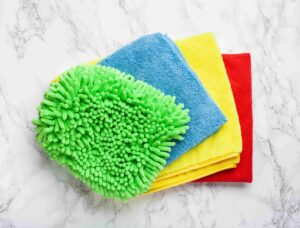China microfiber home textiles manufacturer explain that microfiber household textiles are made of microfiber. Superfine fibers are mainly divided into superfine natural fibers and superfine synthetic fibers.
Superfine natural fibers mainly include animal fibers, such as spider silk, silk, leather, animal hair, etc. Superfine synthetic fibers mainly include polyester, polyamide, polyacrylonitrile, polypropylene, polytetrafluoroethylene and glass fiber. Polyester and polyamide are two kinds of superfine fibers with large output in the industry.
Superfine natural fiber can be used in producing microfiber home textiles
Superfine natural fiber
1.Animal fiber
China microfiber home textiles manufacturer said that In order to survive and develop, driven by the external environment, natural organisms have created a series of optimal composition and structure, so that organisms have special structure and function to adapt to the changes of natural environment.
For example, spiders spit out silk with a diameter of 0.5-1.0 in the normal environment μ m. It has good toughness (elongation at break reaches 14%) and strong ability to bear heavy objects or strong external force impact.
It can be used to prepare bulletproof vests worn by soldiers and protective covers of military machinery. It can also be used in aerospace, construction, medicine, health care and other fields. It has great potential application value.
Silk is another kind of important microfiber home textiles, which is composed of silk fibroin and sericin coated on the periphery of silk fibroin. Each silk is composed of two single fibers in parallel.
After degumming, the fiber linear density is 1.1 ~ 1.3 dtex, the strength of silk is high, the elongation at break can reach 15% ~ 25%, and the wear resistance is also better than other natural fibers.
China microfiber home textiles manufacturer said that In medicine It also has important applications in textile and military fields.
In addition, animal fur (the diameter of micro fibril of wool fiber is 10 ~ 15nm) and the linear density of fibril in cortex are less than 1.1dtex, which are the main reasons for the excellent performance of natural leather and become the first choice for biomimetic research and artificial leather manufacturing.

Another raw material of microfiber home textiles is plant fiber
In addition to animal fiber, plant fiber is another natural fiber with excellent performance. It is mainly distributed in the thick wall tissue of seed plants.
The basic component is cellulose, which is a polymer connected by 7000 ~ 10000 glucose molecules through glycoside chains. As an outstanding representative of superfine natural plant fiber, the diameter of cotton fiber is 10-17 μ m.
The diameter of micro fibril, the smallest unit of cotton fiber, is about 6 nm. It is widely distributed on the surface of plant seeds.
It is an important raw material for theoretical research and industrial application of textile industry. In addition, in the plant stem, some hemp herb stems.
For example, ramie, jute, flax, etc. have relatively developed fiber bundles, and the fiber diameter is 10 ~ 40 μ M is an important source of industrial textile raw materials.
Superfine synthetic fiber
Human beings have found a lot of inspiration from the development and evolution of natural organisms and developed a lot of ultra-fine synthetic fibers. They feel soft, have excellent drapability and are comfortable to wear. At present, they are the focus of ultra-fine fiber research and development all over the world.
The major varieties of synthetic fibers in the industry, such as polyester, polyamide, polyacrylonitrile, polypropylene, etc., can be obtained through certain technical means.
At present, the industrial popularization of ultra-fine polyester is more mature than other fibers and plays a leading role in textile fibers.



